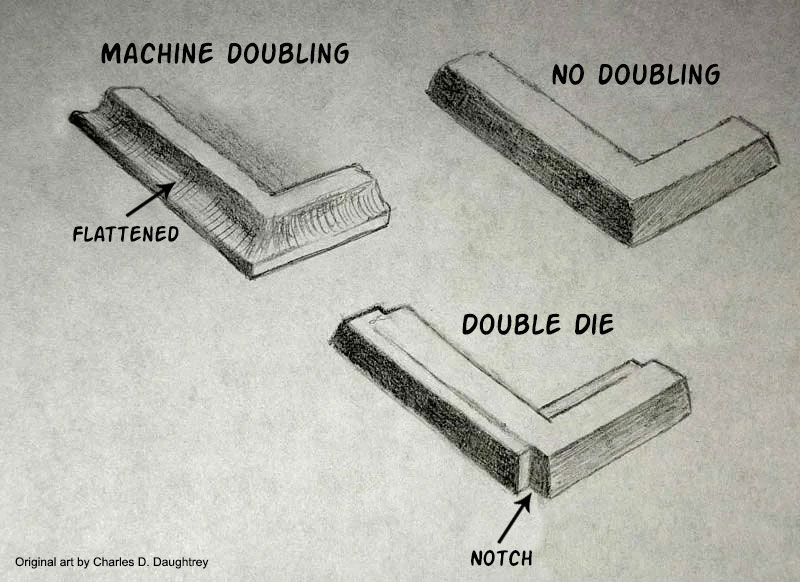Machine doubling - Errors and varieties
Machine doubling errors show the highest points of the design a little narrower at the top. The doubling is simply formed by the die smashing down and flattening a portion of the primary image into the field.

Original art by Charles D. Daughtrey
This error is also called mechanical doubling, machine doubling or die shift and include ejection doubling (when a coin is stick to the die during ejection) and die chatter with minor differences.
When a die is slack, the striking process is functional, but the die is twisted horizontally or vibrate at the end of the strike. When he goes back up, the die release the twist and push the metal on the side and upward. This type of doubling is often visible on the letters and numbers, but occasionally on the main design. When an employee in charge of quality control realizes this, he tightens the part of the machine that holds the die to resolve it.
Machine doubling can also occurs with incuse design or can be multidirectional.
Most doubling on coins are mechanical (machine-made during striking or ejection) or simply due to die deterioration. These errors are less rare and sought after than doubled die.
Machine Doubling values
In very rare instances, mechanical doubled coins might worth a bit more than a regular coin, but the actual collectible and resell value is exactly the same of a not machine doubling coin.
More examples of machine doubling errors
Other forms of doubling
- Die deterioration doubling (die error)
- Double die (die error)





